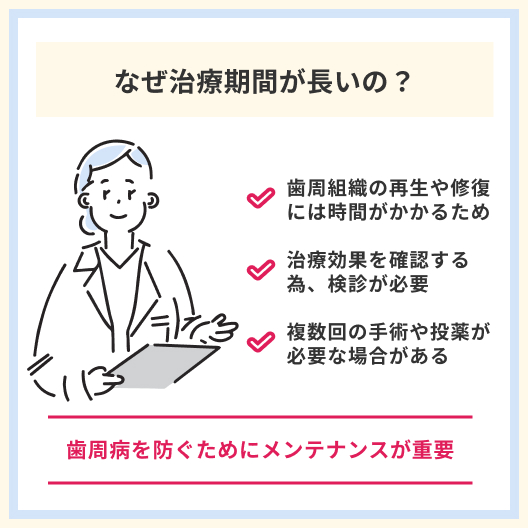Periodontitis Treatment

Contents
What is Periodontal Disease Treatment (Periodontitis Treatment)
Periodontal Disease Treatment (also called Periodontal Therapy) is used to correct swollen gums and bleeding gums. Periodontal disease is an oral disease caused by gum bacteria and is the leading cause of tooth loss if left untreated. Therefore, it is important to treat the disease as early as possible.
Symptoms of Periodontal Disease
Periodontal disease does not cause swollen or painful gums in its early stages, but early signs such as bleeding gums and plaque buildup may occur. It is important to get proper care and treatment at this stage.
Advanced gum disease can cause the gums to recede, exposing the roots of the teeth, forming periodontal pockets, causing the teeth to loosen, and making the teeth feel dull. In more advanced cases, teeth may fall out.
If any of the above symptoms are present, periodontal disease may have progressed and an examination and diagnosis by a dentist is recommended as soon as possible.
Sequence of Periodontal Disease Treatment
The basic flow of periodontal disease treatment includes three steps: 1) examination and diagnosis, 2) professional and self-care, and 3) treatment.

① Examination and Diagnosis
First, the dentist will perform an oral examination to accurately assess the condition of periodontal disease. The gums are checked for swelling, bleeding, and tartar, and detailed examinations, including x-rays and periodontal pocket measurements, are performed as needed. This allows us to determine the progression of periodontal disease and the extent of its impact, and to develop an appropriate treatment plan.

② Professional Care and Self-Care
Next, professional care is provided by a dentist or dental hygienist. Professional treatments such as scaling, gum cleaning and periodontal pocket treatment are performed. Then, to help patients practice appropriate self-care, the dentist provides instructions on daily brushing, flossing, and other oral care techniques. By combining professional care and self-care, we will improve periodontal disease and prevent its recurrence.

③ Treatment Methods and Duration
Treatment methods vary depending on the progression of periodontal disease and the severity of symptoms. Mild periodontal disease often improves with professional care and self-care alone. However, moderate or severe gum disease may require additional treatment. This may include the use of antibacterial medications and periodontal surgery. The length of treatment depends on the individual’s condition and the treatment method, but generally ranges from a few weeks to several months.
In severe cases, gum incisions and medications may be prescribed
If periodontal disease is severe, emergency treatment may be needed.
For example, if the gums are very swollen, a partial gum incision may be made to reduce inflammation. In addition, antibiotics and anti-inflammatory and analgesic medications may be prescribed to reduce pain and swelling. In severe cases, regular visits to the dentist and a treatment plan are necessary. The appropriate treatment for the condition will be chosen to improve the symptoms.
Causes of throbbing tooth pain during periodontal treatment
There are several causes of throbbing tooth pain during periodontal treatment. One is the exposure of the tooth surface due to the removal of tartar. Removing tartar can expose the tooth surface and make it more sensitive to irritation. Stinging can also be caused by treatments such as periodontal pocket cleaning or gum incision. These symptoms are temporary and will improve with treatment.
Duration of Periodontal Disease Treatment and Aftercare
The duration of treatment for periodontal disease depends on the progression of the disease and the method of treatment. In general, it may take several months to six months before the effects of treatment are felt.
Why is the Treatment Time for Periodontal Disease so long?

The main reasons why it takes longer are as follows:
・Regeneration and restoration of periodontal tissues takes time, so treatment must be continued
・Periodic check-ups may be necessary to confirm the effect of the treatment
・Depending on the treatment method, multiple surgeries and medications may be required
After treatment, regular maintenance is important to prevent recurrence of periodontal disease. Regular dental checkups and cleanings can detect the disease early and remove plaque. It is also important to maintain good oral hygiene habits. Please consult with your dentist regarding the progress and results of your treatment to ensure proper care.
For dental problems and advice:
The Toranomon Hills Dental Medical Ryu Clinic offers free consultations for a variety of dental problems.
You can be sure that we will always make suggestions that are appropriate for your situation and that we will always work with you to determine the best treatment plan.
Please do not give up and consult with us first.




